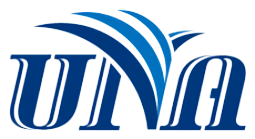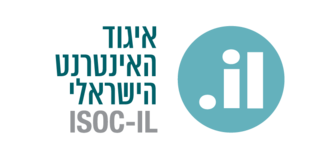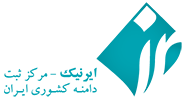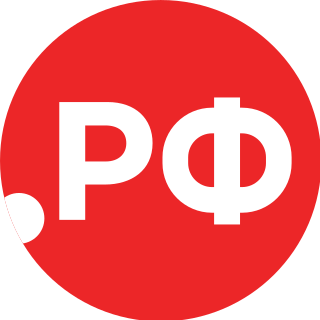A top-level domain (TLD) is one of the domains at the highest level in the hierarchical Domain Name System of the Internet after the root domain. The top-level domain names are installed in the root zone of the name space. For all domains in lower levels, it is the last part of the domain name, that is, the last non empty label of a fully qualified domain name. For example, in the domain name www.example.com, the top-level domain is .com. Responsibility for management of most top-level domains is delegated to specific organizations by the ICANN, an Internet multi-stakeholder community, which operates the Internet Assigned Numbers Authority (IANA), and is in charge of maintaining the DNS root zone.
A country code top-level domain (ccTLD) is an Internet top-level domain generally used or reserved for a country, sovereign state, or dependent territory identified with a country code. All ASCII ccTLD identifiers are two letters long, and all two-letter top-level domains are ccTLDs.

.an was the Internet country code top-level domain (ccTLD) for the former Netherlands Antilles. It was administered by the University of the Netherlands Antilles. The domain was phased out after the Netherlands Antilles were dissolved in 2010. As of November 2010 the .an domain remained live with over 800 domains registered under .an, including secondary levels. On 31 July 2015, use of the domain was discontinued.
Western Sahara is a disputed territory, and as such it has no country code top-level domain (ccTLD). .eh is reserved for this purpose, and will be assigned if the Western Sahara conflict results in an agreement between the Sahrawi Arab Democratic Republic and Morocco. IANA has not designated a ccTLD manager for the .eh domain.
.yu was the Internet country code top-level domain (ccTLD) that was assigned to SFR Yugoslavia in 1989 and was mainly used by Serbia and Montenegro and its two successor states. After Montenegro and Serbia acquired separate .me and .rs domains in 2007, a transition period started, and the .yu domain finally expired in 2010.

.il is the Internet country code top-level domain (ccTLD) of Israel, administered by the Israel Internet Association and managed by NIC - ISRAEL, which hosts the DNS root server and manages the Israeli Internet Exchange, that supports IPv4 and IPv6.

.co is the Internet country code top-level domain (ccTLD) assigned to Colombia.
A sponsored top-level domain (sTLD) is one of the categories of top-level domains (TLDs) maintained by the Internet Assigned Numbers Authority (IANA) for use in the Domain Name System of the Internet, alongside country-code top-level domains (ccTLD) and generic top-level domains (gTLD).

.uz is the Internet country code top-level domain (ccTLD) for Uzbekistan. Registry services were formerly operated by Euracom GmBH, but were later redelegated to UZINFOCOM. Registrations are taken directly at the second level, but the former registry also advertised the availability of registrations at the third level beneath co.uz and com.uz, and some domain names under other second-level names such as org.uz also exist.

.ru is the Latin alphabet Internet country code top-level domain (ccTLD) for Russia introduced on 7 April 1994. The Russian alphabet internationalized country code is .рф.

.ir is the Internet country code top-level domain (ccTLD) for Iran. It is managed by the Institute for Research in Fundamental Sciences.

.gr is the country code top-level domain (ccTLD) for Greece. Registrations are processed via accredited registrars and domain names in Greek characters may also be registered.

.na is the Internet country code top-level domain (ccTLD) for Namibia corresponding to the two letter code from the ISO-3166 standard.

.rs is the Internet country code top-level domain (ccTLD) for Serbia. The domain name registry that operates it is the Serbian National Internet Domain Registry (RNIDS). The letters rs stand for Republika Srbija/Република Србија.
A geographic top-level domain is any of an unofficial group of top-level domains in the Domain Name System of the Internet using the name of or invoking an association with a geographical, geopolitical, ethnic, linguistic or cultural community. The IANA does not recognize these domains as their own group within the Root Zone Database, rather classifying them as generic top-level domains.

The domain name .рф is the Cyrillic country code top-level domain for the Russian Federation, in the Domain Name System of the Internet. In the Domain Name System it has the ASCII DNS name xn--p1ai. The domain accepts only Cyrillic subdomain applications, and is the first Cyrillic implementation of the Internationalizing Domain Names in Applications (IDNA) system. The domain became operational on 13 May 2010. As of 2014 it is the most used internationalized country code top-level domain, with around 900,000 domain names.
An internationalized country code top-level domain is a top-level domain in the Domain Name System (DNS) of the Internet. IDN ccTLDs are specially encoded domain names that are displayed in an end user application, such as a web browser, in their language-native script or alphabet, such as the Arabic alphabet, or a non-alphabetic writing system, such as Chinese characters. IDN ccTLDs are an application of the internationalized domain name system to top-level Internet domains assigned to countries, or independent geographic regions.
The Coordination Center for TLD .RU/.РФ — is the administrator of Top Level National Domains .RU and .PФ. It serves as the national registry.

.հայ is an internet country code top-level domain (ccTLD) for Armenia, designated for two-letter country code AM, intended for domain names in the Armenian language.











